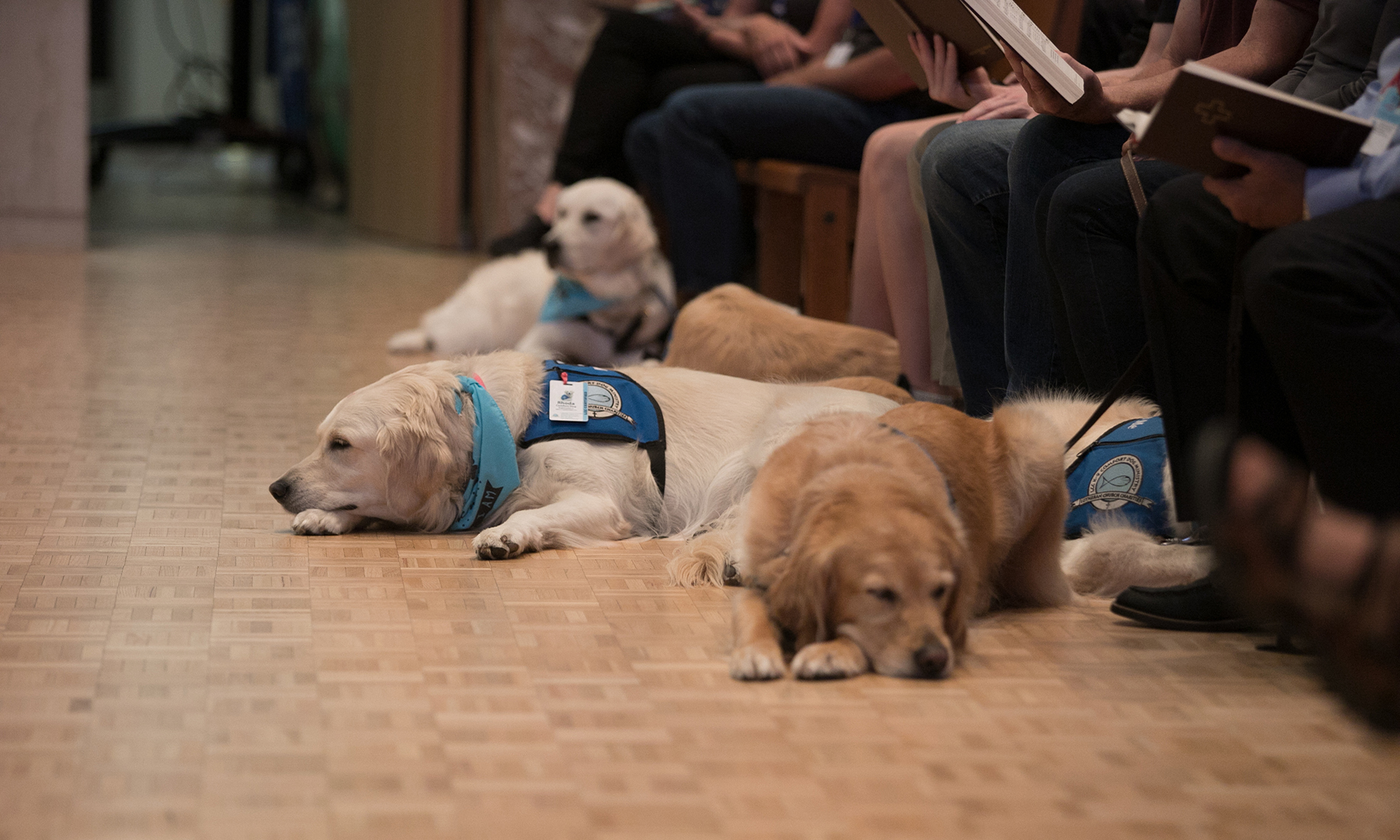
The use of dogs in various therapy and medical settings is on the rise. With it comes some confusion.
With the recent addition of Sage, a Lutheran Church Charities (LCC) K-9 Comfort Dog, to our Concordia Comfort Dog Ministry, we’ve encountered some questions about what Sage’s specific responsibilities are, what the differences are between therapy dogs and assistance animals, and more. So today we’re answering some of those frequently asked questions to help you understand all the different ways that dogs can be used to aid the physical and mental health of individuals or groups of people.
Is Sage a therapy dog?
No. The term “therapy dog” is often used to identify some types of animals that interact in some manner with individuals with the goal of having some sort of positive impact on them. A therapy dog is a pet that has been certified to provide comfort and affection to a large group of people in a public setting. This can take place in different settings like hospitals, assisted living facilities, and schools. Because Sage has specialized high-level training as an LCC K-9 Comfort Dog and functions beyond just providing comfort to the Concordia community, calling him a therapy dog is inaccurate.
What is an LCC K-9 Comfort Dog?
An LCC K-9 Comfort Dog is a purebred Golden Retriever that has been specially trained for over 2,000 hours by the Lutheran Church Charities team to function as a working animal and serve those who are suffering and in need. Here at Concordia, Sage has additional responsibilities. He works with students who are enrolled in the new animal assisted therapy certificate program to help them practice their training and fulfill their required assistance animal handling hours.
Is that different than an assistance (or service) dog?
Yes. Assistance/service dogs are a specific designation for dogs that function as guide dogs to blind individuals, hearing dogs for deaf people, or service dogs to individuals with a variety of needs. Although Sage has had equivalent training to that of a service dog, a service dog is typically trained to work with just one individual to provide one specific type of assist. For example, service dogs could be used to provide assistance to individuals with physical disabilities, to help in medical responses for cases of diabetes or seizures, to provide psychological support, or to help individuals with autism. Sage differs from a typical service dog in that he has been trained to work with a variety of handlers instead of just one individual.
Is my emotional support animal the same thing as an assistance/service animal?
No. An emotional support animal is a pet that provides comfort and therapeutic support to just one individual who is suffering from some kind of mental health condition, typically recommended by a mental health professional. Assistance/service animals are not considered pets due to their working status.
What type of activities or therapies can dogs be used for?
Dogs can be utilized in several different ways in a variety of professions. According to Pet Partners, they can be used for animal assisted interventions (animal assisted activities, animal assisted therapy, or animal assisted education).
Animal assisted interventions is the umbrella term that is used to describe interventions in health, education, and human service situations to help improve the health and wellness of an individual through a goal oriented and structured setting. The following are all forms of animal assisted interventions:
- Animal assisted activities are used solely to enhance the quality of life for an individual through an informal setting that is often recreational or social in nature. They are not associated with treatment goals.
- Animal assisted therapy is directed by health and human service providers through a structured and planned setting. This kind of therapy typically has goals tied to it and can be utilized by professionals in many different disciplines.
- Animal assisted education is administered by an educational professional either in a general education or special education situation to aid student progress academically, help build cognitive functions, and grow prosocial skills.
Whether it’s an assistance/service animal, an emotional support animal, or a therapy animal, dogs can provide great comfort and aid to individuals with a variety of needs. Our entire team in the health professions school is excited to have the first cohort of graduate students working with Sage through the animal assisted therapy certificate program to continue learning all the ways that dogs like Sage can aid in various therapy settings.
Our brand new animal assisted therapy certificate program is currently an option that occupational therapy, physical therapy, and speech-language pathology students can take advantage of.
To learn more about the department of health professions, explore their programs.
—
If this story has inspired you, why not explore how you can help further Concordia's mission through giving.